
Anime is hand-drawn and computer-generated animation originating from Japan. Outside Japan and in English, anime refers specifically to animation produced in Japan. However, in Japan and in Japanese, anime describes all animated works, regardless of style or origin. Many works of animation with a similar style to Japanese animation are also produced outside Japan. Video games sometimes also feature themes and art styles that are sometimes labelled as anime.

Neon Genesis Evangelion, also known as Evangelion or Eva, is a Japanese mecha anime television series produced by Gainax, animated by Tatsunoko, and directed by Hideaki Anno. It was broadcast on TV Tokyo from October 1995 to March 1996. The story is set fifteen years after a worldwide cataclysm in the futuristic fortified city of Tokyo-3. The protagonist is Shinji Ikari, a teenage boy recruited by his father Gendo to the mysterious organization Nerv. Shinji must pilot an Evangelion, a giant biomechanical mecha, to fight beings known as Angels.
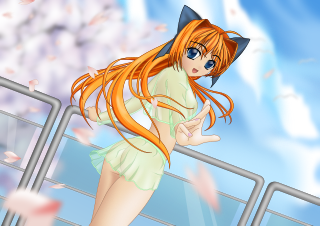
Ecchi is a slang term in the Japanese language for playfully sexual actions. As an adjective, it is used with the meaning of "sexy", "dirty" or "naughty"; as a verb, ecchi suru means "to have sex", and as a noun, it is used to describe someone of lascivious behavior. It is softer than the Japanese word ero, and does not imply perversion in the way hentai does.
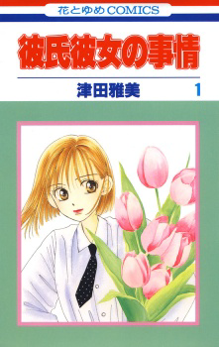
Kare Kano is a Japanese manga series written and illustrated by Masami Tsuda. It was serialized in LaLa from 1995 to 2005 and collected in 21 tankōbon volumes by Hakusensha. It depicts the romance between "perfect" student Yukino Miyazawa and her academic rival Soichiro Arima, and the relationships of several of their friends.
The history of anime can be traced back to the start of the 20th century, with the earliest verifiable films dating from 1917. The history of anime dates back to the early 20th century, with Japan producing its first animated films in the 1910s, influenced by Western animation techniques. However, it wasn't until the 1960s, with the work of Osamu Tezuka, often called the "God of Manga," that anime began to take shape as a distinct cultural phenomenon. Tezuka's *Astro Boy* (1963) is considered one of the first major anime TV series, setting the foundation for the animation industry. Over the following decades, anime grew in popularity both domestically and internationally, with diverse genres and styles emerging. By the 1980s and 1990s, anime had become a global phenomenon, with influential works such as *Akira*, *Dragon Ball*, and *Sailor Moon* reaching international audiences. Today, anime is a major part of global pop culture, known for its unique art styles, storytelling depth, and expansive influence across media.. Before the advent of film, Japan already had a rich tradition of entertainment with colourful painted figures moving across the projection screen in utsushi-e (写し絵), a particular Japanese type of magic lantern show popular in the 19th century. Possibly inspired by European phantasmagoria shows, utsushi-e showmen used mechanical slides and developed lightweight wooden projectors (furo) that were handheld so that several performers could each control the motions of different projected figures.

Nadia: The Secret of Blue Water is a Japanese anime television series created by NHK, Toho, and Korad, from a concept of Hayao Miyazaki, and directed by Hideaki Anno of Gainax. Inspired by the works of Jules Verne, particularly Twenty Thousand Leagues Under the Seas and the exploits of Captain Nemo, the series follows young inventor Jean and former circus performer Nadia, who are led off to adventure by a secret in Nadia's pendant.

Pierrot Co., Ltd., previously known as Studio Pierrot Co., Ltd. until 2002, is a Japanese animation studio established in May 1979 by Yuji Nunokawa, previously an animator and director for Tatsunoko Production. Its headquarters are located in Mitaka, Tokyo. Pierrot is renowned for several worldwide popular anime series, such as Naruto, Bleach, Tokyo Ghoul, Tokyo Underground, Yu Yu Hakusho, Black Clover, Boruto: Naruto Next Generations, Ghost Stories, Great Teacher Onizuka, and Gensomaden Saiyuki.

Sol Bianca: The Legacy is a Japanese OVA miniseries of six episodes loosely based on the OVA series Sol Bianca and employing computer generated animation. This version is a re-imagining of the ship and crew of Sol Bianca, and does not follow the continuity of the original. Sol Bianca: The Legacy combines 3D graphics with 2D animation, particularly in rendering spaceships such as the Sol Bianca itself.
Dragon Ball is a Japanese media franchise created by Akira Toriyama in 1984. The initial manga, written and illustrated by Toriyama, was serialized in Weekly Shōnen Jump from 1984 to 1995, with the 519 individual chapters collected in 42 tankōbon volumes by its publisher Shueisha. Dragon Ball was originally inspired by the classical 16th-century Chinese novel Journey to the West, combined with elements of Hong Kong martial arts films. Dragon Ball characters also use a variety of East Asian martial arts styles, including karate and Wing Chun. The series follows the adventures of protagonist Son Goku from his childhood through adulthood as he trains in martial arts. He spends his childhood far from civilization until he meets a teen girl named Bulma, who encourages him to join her quest in exploring the world in search of the seven orbs known as the Dragon Balls, which summon a wish-granting dragon when gathered. Along his journey, Goku makes several other friends, becomes a family man, discovers his alien heritage, and battles a wide variety of villains, many of whom also seek the Dragon Balls.
Helen McCarthy is the British author of such anime reference books as 500 Manga Heroes and Villains, Anime!, The Anime Movie Guide and Hayao Miyazaki: Master of Japanese Animation. She is the co-author of The Erotic Anime Movie Guide and the exhaustive The Anime Encyclopedia with Jonathan Clements. She also designs needlework and textile art.
Ōten Shimokawa was a Japanese artist, considered to be one of the founding artists and pioneers of anime. Little is known of his early personal life, other than that his family moved to the Tokyo area when he was nine years old. Here he began working for Tokyo Puck magazine as a political cartoonist and manga series artist.

Gyakuten! Ippatsuman (逆転!イッパツマン) is a Japanese anime television series broadcast from February 13, 1982 to March 26, 1983, comprising 58 episodes. It is the sixth entry to the Time Bokan series by Tatsunoko Productions and the second series to feature a super robot as the main hero. The series succeeded Yattodetaman and preceded Itadakiman in 1983. The title character is playable in the fighting game Tatsunoko vs. Capcom: Ultimate All-Stars.

The Anime Encyclopedia: A Guide to Japanese Animation Since 1917 is a 2001 encyclopedia written by Jonathan Clements and Helen McCarthy. It was published in 2001 by Stone Bridge Press in the United States, and a "revised and expanded" edition was released in 2006. In the United Kingdom, it was published by Titan Books. The third edition was released on 3 March 2015 with the subtitle of A Century of Japanese Animation. It gives an overview of most of the famous anime works since 1917.
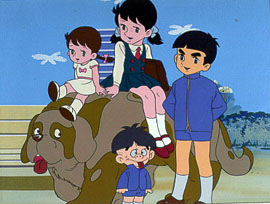
Akane-chan is a shōjo manga series by Tetsuya Chiba. It was serialized in Shōjo Friend, published by Kodansha, from April to September 1968. It was adapted into a monochrome 1968 Toei anime series with the same name directed by Fusahito Nagaki, Yasuo Yamaguchi, Yugo Serikawa and Takeshi Tamiya, which was originally broadcast on Fuji TV.
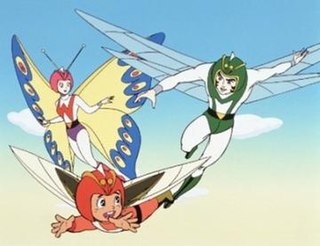
Microid S is a manga series written and illustrated by Osamu Tezuka, published in Akita Shoten's Weekly Shōnen Champion from March to September 1973. It was later adapted into an anime series by Toei.

Jungle Kurobe is a children's anime series by Fujiko Fujio.
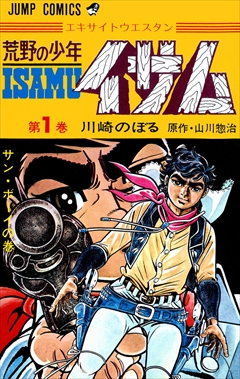
Kōya no Shōnen Isamu, is a Japanese manga series written by Sōji Yamakawa and illustrated by Noboru Kawasaki. It was published in Weekly Shōnen Jump from 1971 to 1974.